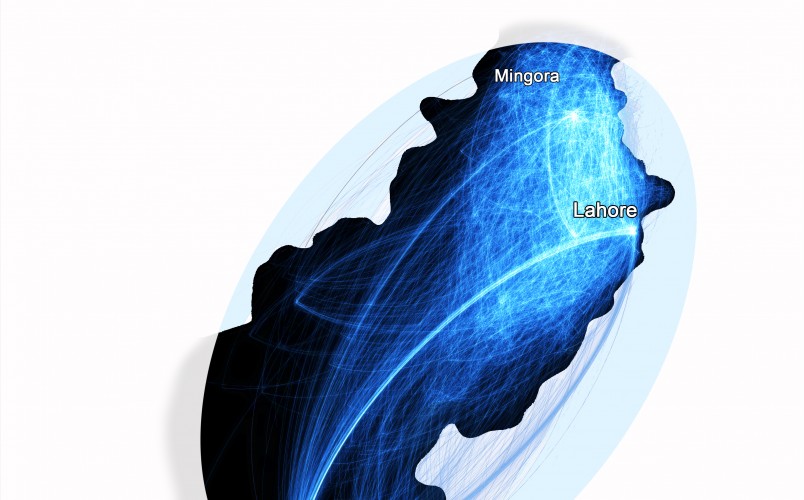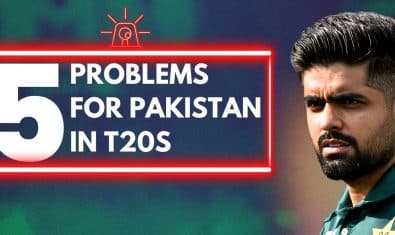A new study by Telenor Research in conjunction with the Harvard T.H. Chan School of Public Health, Oxford University, the U.S. Center for Disease Control, and the University of Peshawar, demonstrates the power of mobile data to predict and track the spread of epidemic disease.
The study, “Impacts of human mobility on the emergence of dengue epidemics in Pakistan”, analysed anonymized call data records from more than 30 million Telenor Pakistan subscribers during the 2013 dengue outbreak, using the large sample to accurately map the geographic spread and timing of the epidemic.
The data was aggregated and anonymized within Pakistan. The resulting model contributes to the design of more effective national response mechanisms in Pakistan and other at-risk nations, while demonstrating the potential for call records to accurately reveal mobility patterns that can help combat and predict the spread of virulent disease.
Michael Patrick Foley, CEO of Telenor Pakistan added that, “Telenor Pakistan is extremely proud to have cooperated with Telenor Research and the Harvard T.H. Chan School of Public Health on this vital contribution to the fight against dengue, the fastest-growing tropical disease and now a leading cause of death among children in some Asian countries. Telenor feels a strong responsibility to make a contribution to the global effort to eradicate the virus and hope that this study can contribute to real action in Pakistan and beyond.”
The Threat
“Dengue is the fastest-spreading tropical disease in the world, with half the global population now living in at-risk regions including Asia, the Americas, and Africa,” notes co-author and Senior Data Scientist at Telenor Research, Dr. Kenth Engø-Monsen, who leads Telenor Research’s Data Driven Development initiative.
“At the same time, public health professionals, data scientists, and mobile operators working together wield important weapons to combat the spread of the disease, including using Big Data to stay a step ahead of an epidemic. In this case a very large mobile data set gave us a bird’s eye view of the human movement that drives transmission, and will help health authorities in at-risk areas put adequate countermeasures in place in anticipation of an outbreak. This is especially important as we see increasing transnational movement of people and the consequent global spread of dengue.”
The dengue carrier mosquito species Aedes aegypti thrives in urban and semi-urban environments and transmits the virus between humans. “Dengue can cause fever, shock, severe bleeding and death, particularly in the young and the elderly, the most vulnerable among us. This is especially true in regions without adequate treatment facilities,” added Dr. Engø-Monsen.
There is currently no cure, or vaccine against, dengue infection, notes Dr. Engø-Monsen.
The Response
Current dengue countermeasures generally focus on control of the carrier species A. aegypti, although these measures are often logistically difficult and vary in efficacy; they also do little to counter large-scale outbreaks once they are underway.
In the absence of effective prevention and treatment, public health system preparedness remains the single most important tool for minimizing outbreaks and preventing mortality. Of paramount importance is optimizing the transmission forecasting capability of health authorities.
The research team found that mobile phone-based mobility estimates accurately predicted the geographic spread and timing of epidemics in both recently epidemic and emerging locations. The study combined the data with dengue climate-suitability maps and estimates of seasonal dengue virus importation to generate fine-scale risk maps.
“The maps and tools we have created have direct application to future dengue containment and epidemic preparedness and can also be applied to other infectious diseases,” observed Dr. Engø-Monsen. “We look forward to working further with public health authorities in Pakistan and elsewhere to deploy them in the prevention and control of future epidemics.”
Visualization of human mobility in Pakistan, aggregated over 7 months. Locations of the three largest outbreaks are marked
Dr. Caroline Buckee, assistant professor of epidemiology, Harvard University and the study’s senior author, said: “Accurate predictive models identifying changing vulnerability to dengue outbreaks are necessary for epidemic preparedness and containment of the virus. Because mobile phone data are continuously being collected, they could be used to help national control programs plan in near real time.”
The Impact
“This study shows that through pooling our expertise with that of our partners we can contribute to making potentially life-saving impact,” says Mai Oldgard, Senior Vice President and Head of Sustainability in Telenor Group. The insights and models from the study can now be applied to further countries and diseases.
The study is co-authored by Amy Wesolowski, Taimur Qureshi, Maciej F. Bonid, Pål Roe Sundsøy, Michael A. Johansson, Syed Basit Rasheed, Kenth Engø-Monsen, and Caroline O. Buckee, and has recently been published in the Proceedings of the National Academy of Sciences (PNAS), the journal of the U.S. National Academy of Sciences.























call monitoring is old thing. if being monitored for a good cause,– appreciated.
END to privacy..
Question: Did Telenor ask the users to participate in the study?
Because they clearly have no right to record and provide the data to others parties outside Pakistan to analyze voice calls except Intelligence agencies.
‘Anonymized’ voice calls can be analyzed for various other information and is a clear privacy breach on part of Telenor. All such studies are done with clear voluntary agreement of users.
I would stay away from Telenor and recommend others to do the same.. sad to say no legal implications come to these companies …
Who and What else Telenor is sharing with other entities without User’s consent? This is something completely unethical and any studies like these should be done with prior consent of the patient/user.
And Why does Telenor has call data records for more than 30 million subscribers still with them of year 2013 or older? I believe Telenor is doing business! right? if true than what is the business need for storing such data which incur cost?
@PTA: Its your job to track whats going on. Keeping track of 5 SIMs is not the only job you should be doing. Rather you should be tracking what is being done to subscribers information and how telecommunication companies are using those to their advantage.
Official response from Telenor Pakistan:
This study used no personal data. “Personal Data” is any data that may be used to
identify the customer. The data used in the Pakistan Dengue study was completely anonymized and void of any identifying information or personal data to ensure there was no risk to customer privacy.
The de-identification process removes directly person-identifiable information in the dataset, and replaces for example mobile phone numbers with random IDs, consistently throughout the dataset. All subsequent processing steps, aggregations, and modifications are done on the de-identified dataset, which results in information about the mobility patterns of larger groups of people and not any individuals. This ultimately ensures that no individuals can be re-identified from the datasets, and hence, the result is a truly anonymized, mobility dataset.
The data was aggregated and anonymized within Pakistan and the study was conducted in early 2014.
Telenor is committed to customer privacy. We take extreme steps in protecting our customers’ privacy and strive to be as transparent as possible about the people, policies, and processes we have in place to protect privacy.